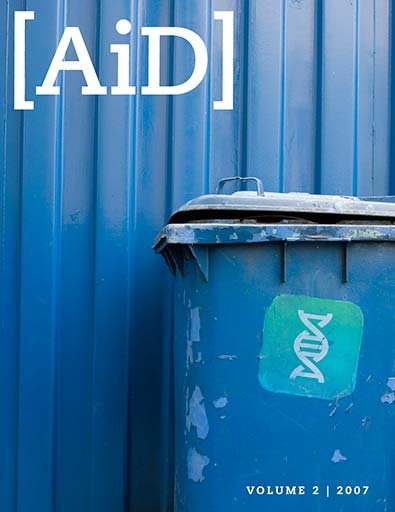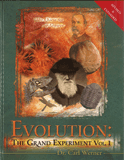
Ancient Protein “Resurrected”?
Abstract
As Science Daily reports, “state-of-the-art computational and molecular techniques [were used] to re-create the ancient progenitors of an important human protein.”
Keywords: protein, presuppositions, ancestral corticoid receptor, circular reasoning, mineralocorticoid receptor, aldosterone, hormone, potassium, mutations, atomic level
When I saw the headline, “UNC researchers outline molecular changes, rebutting the creationist view,”1 I just had to read the article. I was intrigued but not scared that some new piece of evidence might demolish my creationist beliefs (after all, evidence doesn’t speak for itself; people do, so presuppositions play an important role, and I knew theirs were different from mine). Joe Thorton, leader for the research project states:
“Never before have we seen so clearly, so far back in time. We were able to see the precise mechanisms by which evolution molded a tiny molecular machine [protein] at the atomic level, and to reconstruct the order of events by which history unfolded.”2
Had a time machine been discovered? Had they been able to miniaturize themselves to view a protein at the atomic level? Had proteins been obtained from fossils at every level of the proposed evolutionary tree leading from microbe to man? No, none of the above. As Science Daily reports, “state-of-the-art computational and molecular techniques [were used] to re-create the ancient progenitors of an important human protein.”2 So, not a “resurrected” ancient protein, but rather a “recreated” ancient protein based on man’s biased assumptions.
Assumptions abound
Last year Thornton’s research group reported the sequence of an ancient protein, which they named ancestral corticoid receptor (AnCR).3 This protein supposedly existed in an ancient fish 450 million years ago. They obtained the sequence by “comparing the gene sequences of 60 steroid receptors from present-day organisms and using evolutionary relationships to compute the most likely sequence of the ancestral protein.”4 So, here’s the question: how do they know the evolutionary tree they used is correct? These trees are constantly changing, and multiple variations exist at any given time. If the tree changes, the sequence will likely change too; this provides a poor foundation on which to build further research. In addition, this approach assumes evolution to prove evolution. Evolutionary relationships are used to predict various ancestral structures. Such structures are not predicted apart from evolution. This is obviously circular reasoning.
AnCR is very similar to a modern-day mineralocorticoid receptor (MR).4 In humans, MRs bind aldosterone, a hormone produced by the adrenal glands that helps regulate blood sodium and potassium levels. The scientists proposed that the AnCR gene duplicated (see From Ferrari to Model T: Is Reverse Evolution Possible? for more information on the problems involving gene duplication and evolution) and that through mutations one copy became the modern day MR—the other copy became the modern day glucocorticoid receptor (GR).4 GRs bind cortisol, a hormone produced by the adrenal glands that helps regulate the stress response. Their newest research details the alleged mutational steps necessary for the AnCR to become a GR.
“Permissive” mutations
Thornton’s team determined by trial and error the mutations necessary for the AnCR to become a GR.5 Ironically, even though they are intelligent people who knew the functional parts of the protein that needed to be changed, many times they made mutations that either had no effect or completely obliterated the function of the protein5 (again, confirming that mutations are either neutral or harmful). And they think time and chance could do better?! A major inconsistency in their approach is that they performed these experiments with a “goal” or ultimate product in mind. They knew what they wanted the finished structure to look like. Evolution has no long-range goal; it doesn’t know what the end product will be, so each mutation has to be evaluated on its own merits. In the non-realistic computer world, selection for a particular mutation can be made at the genotypic (or DNA) level. In the real world, selection for a particular mutation can only be made at the phenotypic (or whole organism) level. If the mutation leads to a change in the protein that alters its function sufficiently to make a difference in the survival of the organism in a given environment (it survives better), then it will be selected for and remain in the population. If not, then it will likely disappear from the population.
The scientists coined a new term, “permissive” mutations.5 These mutations, although not altering the function of the protein, provide the stabilization needed for future mutations that do alter the function of the protein.5 If the permissive mutations are not in place first, then the function-altering mutations demolish the function of the protein. The question is: why would these permissive mutations be selected for and kept in the population? If they don’t permit an immediate and significant change in protein function, which alters the ability of an organism to survive better in a given environment, then they will not be preferentially kept with the idea that in the future they will be “helpful.” (Remember, selection occurs at the phenotypic not genotypic level.) In fact, these scientists are making evolution seem even more improbable by suggesting a particular evolutionary path that must be followed—permissive mutations (which aren’t even selectable) followed by function-altering mutations. Thornton’s group writes, “If the historical ‘tape of life’ could be played again, the required permissive changes might not happen, and a ridge leading to a new function could become an evolutionary road not taken.”5 In other words, an evolutionary dead end that takes the population as a whole back to square one in terms of the mutations needed to make the AnCR become a MR or a GR. However, they are not discouraged, “Imagine if evolution could be rewound and set in motion again: a very different set of genes, functions, and processes might be the outcome.”2 Chemistry, physics, and our interdependence on other organisms, however, play a role in severely limiting the biological possibilities.
Another selection problem for the AnCR protein is that the hormone aldosterone supposedly did not evolve until tens of millions of years later.5 It’s difficult to imagine how the AnCR protein would maintain the mutations (becoming a MR) that allow it to bind aldosterone for millions of years with no aldosterone present. With no selection pressure to do so and keeping in mind that evolution is goal-less, these mutations would have been easily lost.
Conclusion
One news reporter, Yonat Shimron of The News & Observer, seemed especially bent on the implications of this research for creationists and those of the Intelligent Design Movement.1 She writes, “[T]he study’s insight into the process of evolution provides a scientific alternative to one of the key principles of intelligent design ...” being that of complexity which requires an “intelligent designer”.1 In the same article, Daniel Weinreich of Brown University in Rhode Island states, “This study helps someone who’s undecided to appreciate that mutations, one by one, are yielding a benefit to the organism.”1 Apparently the “undecided” are those who are on the fence about creation and evolution. This new “evidence” actually supports, enhances, and further confirms that life requires a designer, and the only one intelligent enough is the Creator God of the Bible.
Footnotes
- “Study maps evolution tiny steps: UNC researchers outline molecular changes, rebutting the creationist view,” The News & Observer, 2007.
- “Scientists retrace evolution with first atomic structure of an ancient protein,” Science Daily, 2007.
- Jamie Bridgham, et al, “Evolution of hormone-receptor complexity by molecular exploitation,” Science 312 (2006):97-101.
- Jocelyn Kaiser, “Resurrected proteins reveal their surprising history,” Science 317 (2007):884-885.
- Eric Ortlund, et al, “Crystal structure of an ancient protein: Evolution by conformational epistasis,” Science 317 (2007):1544-1548.
Recommended Resources

Answers in Genesis is an apologetics ministry, dedicated to helping Christians defend their faith and proclaim the good news of Jesus Christ.
- Customer Service 800.778.3390
- © 2024 Answers in Genesis




